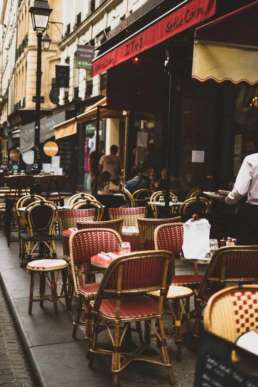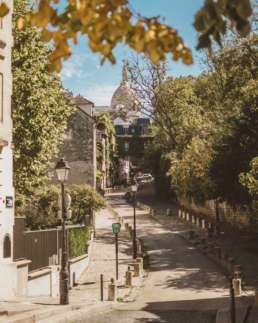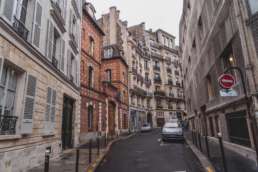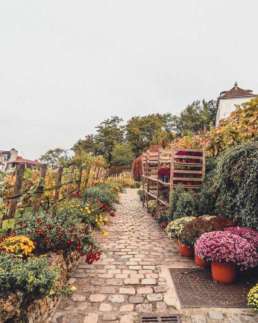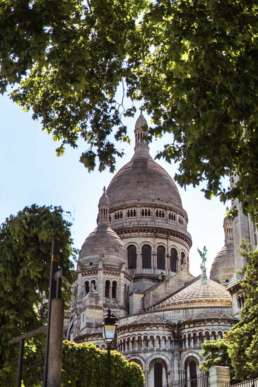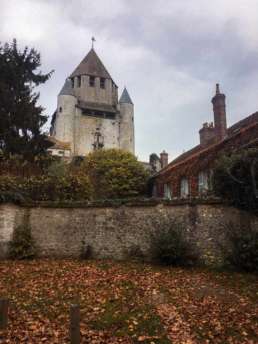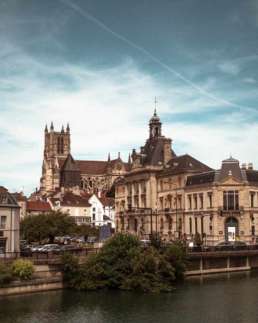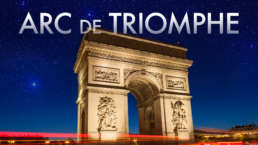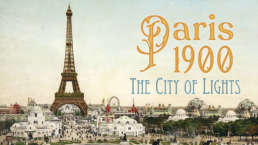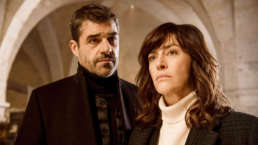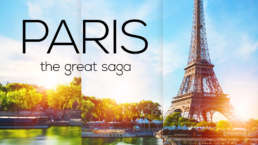
Home to Paris, the capital of France, the Île de France region is steeped in as many mysteries as it is history. From the regal to the relaxed, there’s no shortage of incredible destinations jam-packed into this central region. This means that Île de France is best visited over the course of at least a week and even longer if you have time to spare.
What is Île de France known for?
Of course, the star of the show when it comes to this popular region is Paris itself, which is the largest city in France and boasts a population of just over 2 million residents. Other towns and attractions of note include the Basilica of Saint-Denis, and the town of Sceaux, whose magnificent château has been used for many a filming location and whose park possesses a beautiful cherry blossom orchard which truly comes to life come spring.
Île de France boasts a smattering of UNESCO listed World Heritage sites, all of which are worth more than a cursory glance if you happen to be in the region. Some of the best include the banks of the River Seine (be sure to check out the ‘bouquinistes’, little green huts selling all manner of vintage prints and antiquarian books) and the world-famous Palace and Park of Versailles.
Hidden gems of Versailles
Outside of Paris proper, Versailles is probably the most famous destination in Île de France and it draws over 10 million visitors on a yearly basis. As well as the Palace itself, don’t miss out on Versailles town, which offers delights such as the 18th-century Versailles Cathedral, the house museum of Musée Lambinet, and a handful of independent bookshops.
Versailles is the ideal day trip from Paris and requires a full day if you want to make the most of its André Le Nôtre designed gardens, the Palace, and many other buildings. While everyone has heard of the Hall of Mirrors, the Grand Trianon, and The Empire Rooms, I want to draw your attention to a corner of the park that receives a little less attention.
In the very extremity of the park, a stone’s throw away from Le Petit Trianon, you’ll find The Queen’s Hamlet, which is known as the Hameau de la Reine in French and was created in the 18th-century. Shortly after the death of Louis XV, Louis XVI gifted Le Petit Trianon to Marie Antoinette, making it the first time in history that a Queen of France became a property owner.
In the grounds, Marie Antoinette commissioned an English Garden and a ‘hamlet,’ where the Queen could play ‘dress-up’ in her free time. Today, the restored hamlet is a quiet reprieve from the hustle and bustle of the rest of Versailles, just as it would have been for Marie Antoinette over three centuries ago.
Hidden gems of Paris
The city of Paris itself is fairly small and compact and you can walk from east to west or north to south in around two hours. Paris is divided into 20 districts known as arrondissements and each one has its own distinct vibe and ambiance.
It comes as a surprise to many, but the Eiffel Tower isn’t actually in the center of Paris but more to the center-west. And while many opt to go up the tower, I would recommend instead heading up the Arc de Triomphe (8th arrondissement) or up the Tour Montparnasse (15th arrondissement) as then your aerial photos will actually contain La Tour Eiffel!
There are several areas that are particularly popular among visitors to the city; Île de la Cité, Le Marais, and The Latin Quarter. But if there’s one area you make sure to visit while in the City of Light, make it Montmartre, which covers a large swathe of the 18th arrondissement.
This area deserves a good amount of time to explore and so set aside at least half a day in order to meander the cobbled lanes, watch the artists paint en plein air in Place du Tertre and marvel at the breathtaking architecture of the Sacré-Coeur Basilica.
For such a touristy location, there are also a surprising number of hidden gems to be explored in Montmartre, if only you know where to look. Some of my favorites include peeking in on the vine of Le Clos Montmartre (a real vineyard that opens its doors to visitors only a handful of times a year) and Square Marcel Bleustein Blanchet (a surprisingly quiet square that offers unparalleled views of the back of the Sacré-Coeur).
If you’re feeling peckish, then you can get a savory crêpe (known as a galette in French) to go from Grenouilles and sit in the square while admiring the view and partaking in a popular Parisian pastime: people watching.
Another great address in Montmartre to add to your French itinerary is Le Refuge des Fondus. Although it admittedly does not serve the best quality fondue in France, for a fun and convivial night out, you can head to this fondue restaurant. There are set courses and only a few options on the menu when it comes to the main: meat or cheese. Wine is served in baby bottles which is certainly memorable. Just be sure to book in advance as space fills up fast.
After exploring Montmartre and making the most of scouting out gems such as La Maison Rose and the Musée de Montmartre (a space where Renoir once had his atelier that has since been transformed into a house museum), you can head back down into the heart of Paris. Île de la Cité is the largest natural island in the River Seine and is where Paris was established several millennia ago.
You’ll already be familiar with one of Île de la Cité’s most famous attractions, Notre Dame Cathedral, which was sadly ravaged by a great fire in 2019 and is now closed until further notice. For those who want to see some grand churches, interesting alternative interiors include Saint Sulpice (6th arrondissement) and Saint Eustache (1st arrondissement).
On Île de la Cité itself, Sainte Chapelle boasts one of the most impressive and complete sets of medieval stained-glass windows in the world. Be sure to go mid-week and earlier in the day if possible to get more of the place to yourself.
Those looking to head off the beaten path can discover more about the tragic love story of Heloïse and Abelard, who are allegedly interred in Père Lachaise Cemetery and gaze at the oldest public clock in Paris, which hangs on the side of the Conciergerie and dates all the way back to the 14th-century.
Just across the river Seine, heading south and into the left bank (known as the Rive Gauche in French), the Latin Quarter is so-called because, during the Middle Ages, students of the nearby Sorbonne university would have conversed with one another solely in Latin.
As well as being a hub of students today, this area is best-known as being home to the iconic English-language bookshop, Shakespeare and Company and also where you’ll find the Paris Panthéon.
This regal building was once a church dedicated to Saint Genevieve, Patron Saint of Paris, but is now a secular building where people of note are laid to rest. For a fee, you can climb up into the Panthéon dome and admire breathtaking views of the nearby Luxembourg Gardens.
Otherwise, walk just a short distance and you’ll find one of my favorite off the beaten path spots in the city: Saint Etienne du Mont. This church not only contains the last rood screen in Paris but also the relics of Saint Genevieve. Entrance into the church is free, but donations are always appreciated.
Provins
A medieval town with its own 12th-century keep, historic underground tunnels, and well-preserved ramparts, Provins is a must-see side trip from Paris for the history buffs out there. In the summer, Provins even has its very own medieval-themed fair, while in the winter it has a Christmas market that sees traditional Bavarian stalls, hot wine (known as Vin Chaud in French), and an ice-skating rink. The medieval theme also runs through the Murder In…: Provins episode where the victim is the director of a medieval theater troupe.
Even if there isn’t an event taking place when you visit Provins, the town itself is enough of an attraction. For a nominal sum, it’s possible to climb up the medieval Tour César, which rewards those who clamber up the narrow staircase with breathtaking views of the timber-framed houses below and the countryside beyond.
The ramparts, which were constructed between the 11th and 14th-centuries, can be strolled along, offering a tangible way to get up close with history for free. The last major attraction of Provins are the underground tunnels, which can be visited by guided tour only and were largely in use during the Middle Ages when Provins was the site of important champagne fairs up to six times a year.
Fontainebleau
For those who are in search of Versailles without the crowds, Fontainebleau is a no brainer. Much like Versailles, and other historic palaces in the area, Fontainebleau began life as a royal hunting lodge during the Middle Ages.
The fate of Fontainebleau changed during the 16th and 17th-centuries when elites and nobles from nearby Paris decided to transform the Île de France region into one sprawling luxury retreat, with mansion houses dotted across the green landscape. Over the centuries, Fontainebleau was overseen by numerous kings and was even the place from which Napoleon I gave a speech from the central horseshoe staircase.
Today, as well as wandering around the regal and imperial rooms of the Palace, one of the best things to do in Fontainebleau is to rent a little rowing boat on the lake close to the château, together with a few friends.
The best time to visit the Palace and its surroundings is in the fall when the leaves turn a beautiful shade of golden and you can go for a pleasant stroll through the Fontainebleau forest, one of the biggest forests in the Île de France region.
Meaux
A charming settlement offering visitors the chance to experience life in the French countryside just a half hour train ride away from Paris, Meaux is the perfect excursion from the capital if you only have an afternoon to spare. If you’re well versed in WWI history, then you’ll likely have already heard of Meaux as it is home to the largest World War One Museum in Europe.
The town itself is centered around an impressive cathedral which is free to visit and dates back to the 12th-century. Truth be told that one of the greatest joys of a visit to Meaux is sitting in the little square in front of the cathedral and indulging in a Croque Monsieur (toasted cheese and ham sandwich) filled with the local specialty: Brie de Meaux.
Brie de Meaux is a soft cheese and the delicacy of choice when it comes to cheese from Île de France and is a designated AOC (appellation d’origine contrôlée), meaning that only cheese produced in the region can be called as such. As of the early 2000s, over 6,774 tons of Brie de Meaux ar produced on an annual basis.
A final note
If you’re planning to visit mainland France, then chances are that one of your first ports of call will be Paris and the Île de France region. An area steeped in history and popular the world over, there are still a surprising number of ways to escape the crowds, indulge in local cuisine, and soak up the good life.
For more Parisian inspiration, be sure to check out these select documentaries in addition to Murder In…: Provins, now streaming on MHz Choice.
Episodes featuring Paris and the Île de France region on MHz Choice
About the Author
Sophie Nadeau is a British Canadian travel writer currently residing in Paris with her French husband. She has been lucky enough to have lived in several different countries and has run her travel blog, solosophie.com, full time since 2017. With a particular interest in history and culture (especially if there’s a château visit involved), she spends her spare time painting, reading, cooking up vegetarian recipes, spending too much looking up dog photos online, and researching new hidden gems to discover.

